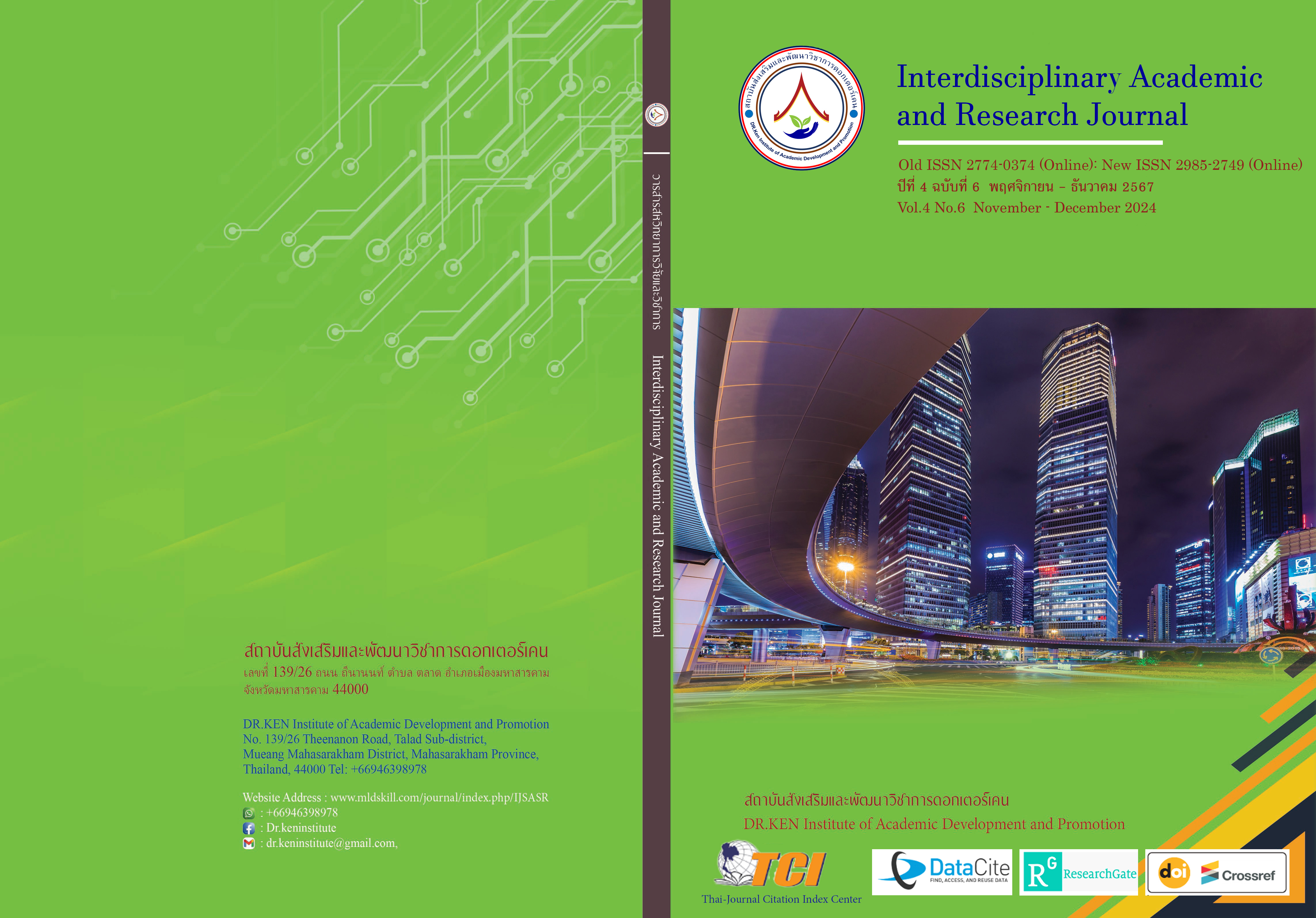Guidelines for Developing Teacher Instructional Processes Focused on Learner-Centered Education Network Group Promoting the Efficiency of Special Education Centers, Network Group 9
DOI:
https://doi.org/10.60027/iarj.2024.280003Keywords:
Development Guidelines, Teacher, Learner-centered Education, Special Education CentersAbstract
Background and Aims: Developing teachers in learner-centered instructional processes is a sustainable approach to improving teacher quality based on information from self-assessments and annual reports. By using development guidelines to refine operations according to plans, projects, activities, and teaching methods, continuous improvement of student education standards is achieved. The responsibility for educational quality improvement is shared by everyone, with ongoing progress in operations leading to enhanced student outcomes across the entire institution. Therefore, this research aims to study the current and the desirable state of developing teacher instructional processes focused on learner-centered education network group promoting the efficiency of special education centers, network group 9. And to study the development guidelines for developing teacher instructional processes focused on learner-centered education network group promoting the efficiency of special education centers, network group 9.
Methodology: The research process was divided into 2 phases: Phase 1; to study the current and the desirable state of developing teacher instructional processes focused on learner-centered education. The sample group of 217 administrators and teachers. The research tool was a questionnaire, with a reliability of 0.94 and a discrimination power of 0.38 – 0.72. The statistics used for data analysis were mean and standard deviation. Phase 2; to study the guidelines for developing teacher instructional processes focused on learner-centered education. The Key Informant groups include 7 experts for studying the development guidelines and 7 experts for evaluating guidelines. The research instruments were interview form and evaluate form the suitability and feasibility.
Results: 1. The current state overall was high average. The desirable state overall was at the high level, Ranked as follows: Positive classroom management, Exchange of learning and feedback to develop and improve instructional management, Use of information technology and learning resources that support learning, Instructional management through thinking and practical activities, Systematic evaluation of students and using results for student development. The results of evaluating the suitability and feasibility of the overall approach were at the highest level. 2. The development guidelines consist of 14 approaches: 1) Positive classroom management: 3 approaches 2) Exchange of learning and feedback for developing and improving 3) Instructional Management: 2 approaches 4) Use of Information Technology and Learning Resources that Support Learning: 3 approaches 4) Instructional management through thinking and practical activities: 2 approaches 5) Systematic valuation of students and sing results for student development: 4 approaches. In summary, the evaluation of the appropriateness and feasibility of these guidelines is at the highest level.
Conclusion: Having instructional processes that create opportunities for students or stakeholders to participate, teaching management that is connected to the context of the community and local area, and systematic and effective evaluation of student's progress and development according to their potential.
References
กระทรวงศึกษาธิการ. (2551). พระราชบัญญัติการจัดการศึกษาสำหรับคนพิการ พ.ศ.2551. กรุงเทพฯ : คุรุสภาลาดพร้าว.
บุญชม ศรีสะอาด. (2556). การวิจัยเบื้องต้น. พิมพ์ครั้งที่ 9. กรุงเทพฯ : สุวีริยาสาส์น.
พิมพันธ์ เดชะคุปต์. (2558). การจัดการเรียนรู้ในศตวรรษที่ 21. กรุงเทพฯ: โรงพิมพ์แห่งจุฬาลงกรณ์มหาวิทยาลัย.
พิมพันธ์ เดชะคุปต์. (2560). เปิดประเด็น: เหลียวหลังแลหน้าการศึกษาไทย 4.0. Journal of Education Studies. 45(2), 304-309.
วราภรณ์ สาโรจน์. (2558). การพัฒนาตัวบ่งชี้ภาวะผู้นำทางวิชาการของครูในสถานศึกษาขั้นพื้นฐานภาคตะวันออกเฉียงเหนือ. วิทยานิพนธ์ปริญญาครุศาสตรดุษฎีบัณฑิต สาขาวิชาการบริหารจัดการการศึกษา มหาวิทยาลัยราชภัฏมหาสารคาม.
วิจารณ์ พานิช. (2556). การสร้างการเรียนรู้สู่ศตวรรษที่ 21. กรุงเทพฯ: มูลนิธิสยามกัมมาจล.
วิชัย วงศ์ใหญ่. (2563). New normal ทางการเรียนรู้. กรุงเทพฯ : บัณฑิตวิทยาลัย มหาวิทยาลัยศรีนครินทรวิโรฒ.
สำนักวิชาการและมาตรฐานการศึกษา. (2561). เทคนิคการประเมินเพื่อพัฒนาการเรียนรู้ : การตั้งคำถามและการให้ข้อมูลย้อนกลับเพื่อส่งเสริมการเรียนรู้. กรุงเทพฯ : สำนักงานคณะกรรมการการศึกษา
อาภารัตน์ ราชพัฒน์. (2554). การพัฒนาตัวบ่งชี้ภาวะผู้นาของครูในสถานศึกษาขั้นพื้นฐาน. วิทยานิพนธ์ปรัชญาดุษฎีบัณฑิต สาขาวิชาการบริหารการศึกษา มหาวิทยาลัยขอนแก่น.
Cronbach, L.J. (1970). Essentials of Psychological Testing. 3rd edition. New York: Harper. And Row.
Krejcie, R. V. & Morgan, D. W. (1970). Determining Sample Size for Research Activities. Educational and Psychological Measurement, 30, 607-610.
Mehren, W. (1976). Measurement and Evaluation in Education and Psychology. New York: Holt, Rinehart, and Winston, Inc.
Downloads
Published
How to Cite
Issue
Section
License
Copyright (c) 2024 Interdisciplinary Academic and Research Journal

This work is licensed under a Creative Commons Attribution-NonCommercial-NoDerivatives 4.0 International License.
Copyright on any article in the Interdisciplinary Academic and Research Journal is retained by the author(s) under the under the Creative Commons Attribution-NonCommercial-NoDerivatives 4.0 International License. Permission to use text, content, images, etc. of publication. Any user to read, download, copy, distribute, print, search, or link to the full texts of articles, crawl them for indexing, pass them as data to software, or use them for any other lawful purpose. But do not use it for commercial use or with the intent to benefit any business.
















.png)


